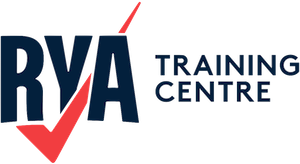Glossary Archive
Rule 2: Responsibility
Nothing in these Rules shall exonerate any vessel, or the owner, master or crew thereof, from the consequences of any neglect to comply with these Rules or of the neglect of any precaution which may be required by the ordinary practice of seamen, or by the special circumstances of the case. In construing and complying...
Rule 3: General definitions
For the purpose of these Rules, except where the context otherwise requires: The word "vessel" includes every description of water craft, including non-displacement craft, WIG craft and seaplanes, used or capable of being used as a means of transportation on water. The term "power-driven vessel" means any vessel propelled by machinery. The term "sailing vessel"...
Rule 4: Application
Rules in this Section apply in any condition of visibility This rule introduces the section and clarifies that everything in Part B—Section I is concerned with what happens irrespective of visibility (i.e., whether vessels can see one another or not).
Rule 5: Look-out
Every vessel shall at all times maintain a proper look-out by sight and hearing as well as by all available means appropriate in the prevailing circumstances and conditions so as to make a full appraisal of the situation and of the risk of collision. We can only hope to avoid something if we know it's...
Rule 6: Safe speed
Every vessel shall at all times proceed at a safe speed so that she can take proper and effective action to avoid collision and be stopped within a distance appropriate to the prevailing circumstances and conditions. In determining a safe speed the following factors shall be among those taken into account: By all vessels: the...
Rule 7: Risk of collision
Every vessel shall use all available means appropriate to the prevailing circumstances and conditions to determine if risk of collision exists. If there is any doubt such risk shall be deemed to exist. Proper use shall be made of radar equipment if fitted and operational, including long-range scanning to obtain early warning of risk of...
Rule 8: Action to avoid collision
Any action taken to avoid collision shall be taken in accordance with the Rules of this Part and shall, if the circumstances of the case admit, be positive, made in ample time and with due regard to the observance of good seamanship. Any alteration of course and/or speed to avoid collision shall, if the circumstances...
Rule 9: Narrow channels
A vessel proceeding along the course of a narrow channel or fairway shall keep as near to the outer limit of the channel or fairway which lies on her starboard side as is safe and practicable. A vessel of less than 20 metres in length or a sailing vessel shall not impede the passage of...
Rule 10: Traffic Separation Schemes
This Rule applies to traffic separation schemes adopted by the Organization and does not relieve any vessel of her obligation under any other Rule. A vessel using a traffic separation scheme shall: proceed in the appropriate traffic lane in the general direction of traffic flow for that lane; so far as practicable keep clear of...
Rule 11: Application
Rules in this Section apply to vessels in sight of one another. This rule introduces the section and clarifies that everything in Part B—Section II is concerned with what happens when we are in sight of another vessel (specifically, what actions should be taken when we can see another vessel).


